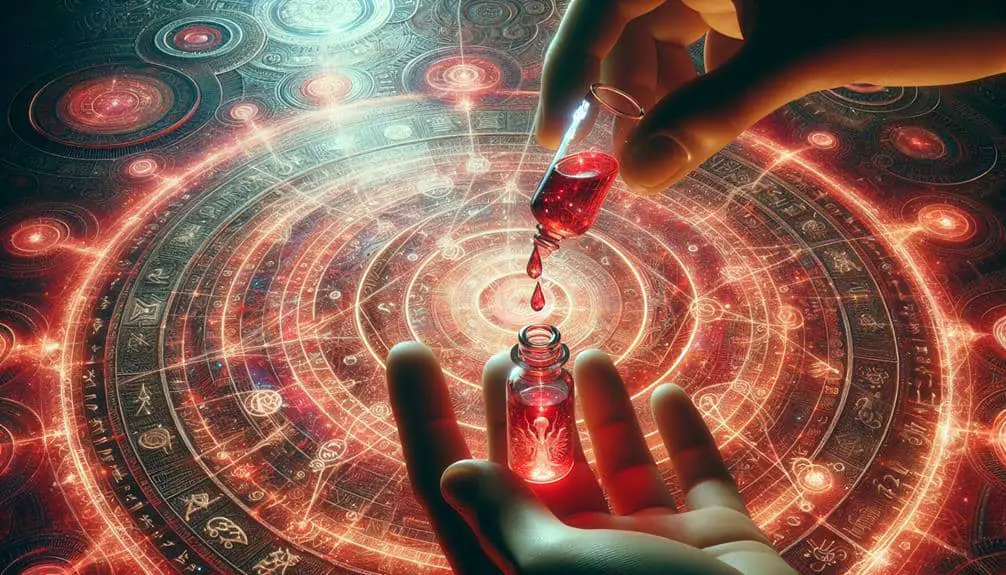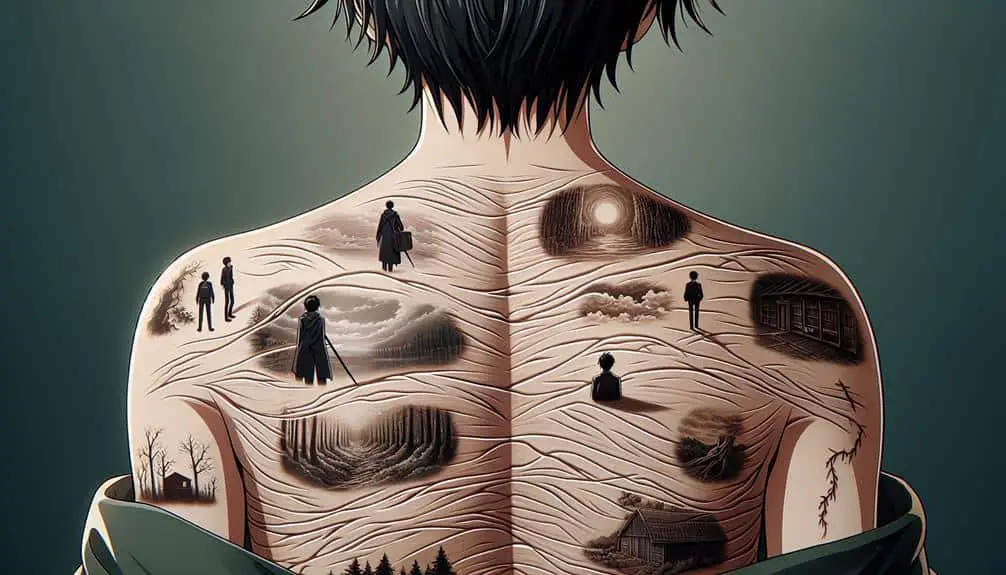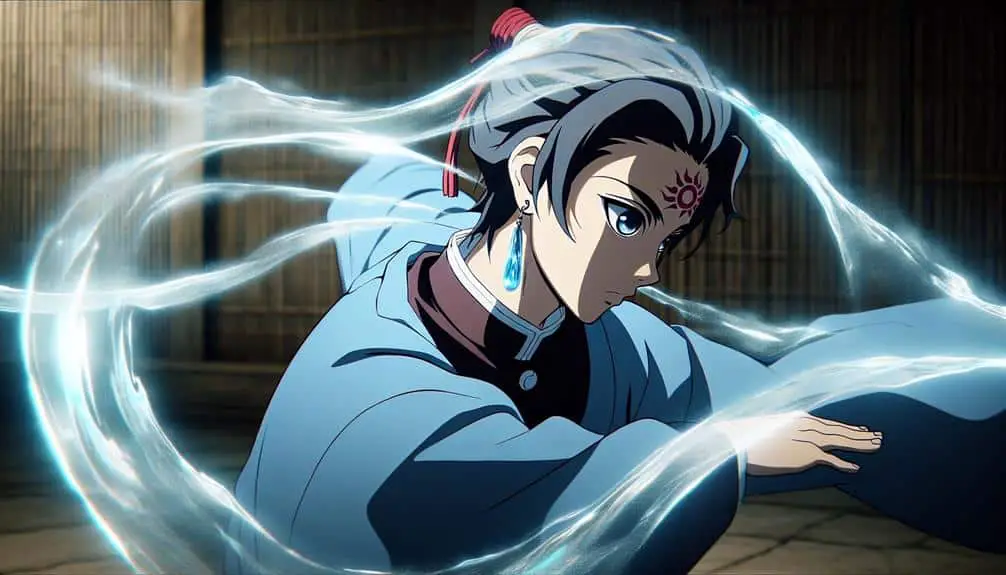To enhance precision in demon blood art, secure the brush for controlled strokes. Vary pressure for different lines and layer to add depth. Symbolism's clarity matters, so maintain consistency and explore deeper meanings. Use subtle color gradients for impact. Precise line work needs steady movements and geometric shapes. Balance intricate details by refining composition and textures. Create engaging masterpieces through meticulous techniques. Improve your demon blood art with these detailed methods.
Key Points
- Practice consistent brush control for precise lines and shapes.
- Utilize layering techniques for depth and dimension in artwork.
- Experiment with subtle color gradients for visual impact.
- Focus on precision in line work for intricate details.
- Perfect composition and texture for balanced and detailed demon blood art.
Importance of Proper Brush Strokes
To achieve optimal results when practicing Demon Blood Art, mastering the technique of proper brush strokes is essential. Brush control plays a pivotal role in determining the precision and finesse of your artwork. Begin by holding the brush securely but not too firmly, allowing for fluid movements while maintaining control. Practice varying pressure on the brush to create different stroke widths, vital for intricate detailing in Demon Blood Art.
Layering techniques are equally vital in achieving depth and dimension in your artwork. Understanding how different layers interact and complement each other is necessary. Start with a light base layer to establish the foundation of your piece, then gradually build up layers to add complexity and richness to your art. Experiment with blending techniques to seamlessly merge colors and create smooth shifts between different elements of your composition. Mastery of layering techniques will elevate the quality of your Demon Blood Art, bringing your visions to life with precision and clarity.
Utilizing Symbolism for Clarity
Enhancing the clarity of your Demon Blood Art can be achieved through the strategic utilization of symbolism. Symbolism interpretations and visual metaphors play an essential role in conveying complex ideas within your artwork. Here's how you can effectively utilize symbolism for clarity:
- Deep Symbolism Interpretations: Explore the deeper meanings behind symbols you choose, ensuring they align with the message you aim to convey. This attention to detail adds layers of meaning to your artwork.
- Visual Metaphors for Conceptual Clarity: Use visual metaphors to represent abstract concepts or emotions. This technique not only enhances the visual appeal of your art but also aids viewers in understanding the underlying message.
- Consistency in Symbolism: Maintain consistency in the symbolism used throughout your artwork. This coherence helps create a cohesive narrative, making it easier for viewers to follow your artistic expression.
Incorporating Subtle Color Gradients
When integrating subtle color gradients into your Demon Blood Art, consider how these nuanced shifts can enhance the depth and visual impact of your artwork. Blending techniques play a vital role in achieving seamless color shifts within your piece. To master this aspect, start by selecting colors that harmonize well and gradually shift between them using controlled strokes.
Utilize techniques like feathering, where colors are subtly overlapped and blended, to create a smooth gradient effect. Pay attention to the direction of your strokes to maintain consistency in your color shifts.
Experiment with different blending tools such as brushes, sponges, or even your fingers to achieve varying levels of softness or sharpness in the gradients. By mastering these techniques, you can create a sense of dimensionality and richness in your Demon Blood Art. Remember, the key lies in practice and precision when integrating subtle color gradients, as they can greatly enhance the overall quality of your artwork.
Precision in Line Work
Consider the meticulous alignment of your strokes as you explore perfecting the precision in your line work for Demon Blood Art. Achieving accuracy and mastering control over your lines are vital steps towards elevating your artistry.
Here are three key techniques to enhance precision in your line work:
- Consistent Pressure: Maintaining a consistent pressure on your brush or pen is essential for creating uniform lines. Varying pressure can lead to inconsistencies in line thickness, affecting the overall precision of your artwork.
- Slow and Steady Movement: Slow, deliberate movements allow for better control over the direction and length of your lines. Rushing through your strokes can result in shaky lines and imprecise details.
- Practice Geometric Shapes: Practicing drawing precise geometric shapes such as circles, squares, and triangles can help improve your accuracy and control over lines. These basic shapes serve as a foundation for mastering intricate details in your Demon Blood Art. By honing your skills in drawing these shapes, you can enhance the precision of your line work overall.
Perfecting Intricate Details
To achieve mastery in perfecting intricate details in Demon Blood Art, meticulous attention to the smallest elements is paramount. Refining composition involves carefully considering the arrangement of elements within the artwork. Pay close attention to how each detail interacts with the whole, ensuring a vital and balanced composition. By refining the composition, you can guide the viewer's eye through the artwork in a deliberate manner, highlighting key elements and creating a visually pleasing experience.
Enhancing texture is another essential aspect of perfecting intricate details. Experiment with different techniques to create a variety of textures within your artwork. Whether it's the rough texture of scales or the smoothness of skin, each detail adds depth and dimension to your piece. Consider how light interacts with various textures, creating highlights and shadows that enhance the overall realism of your work.




